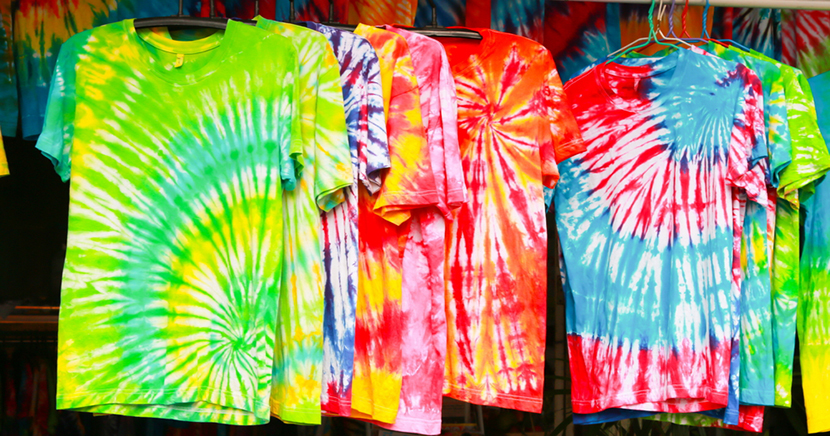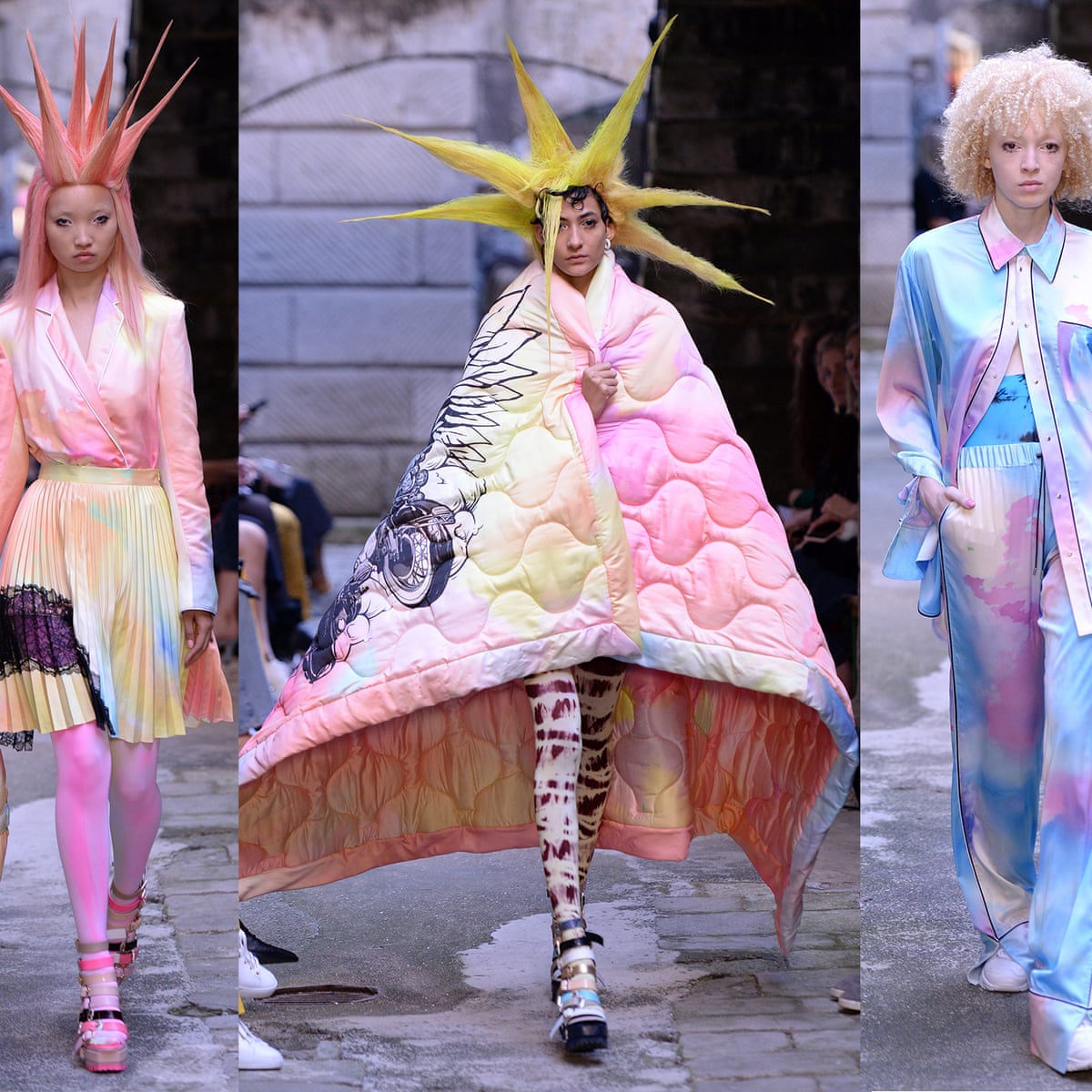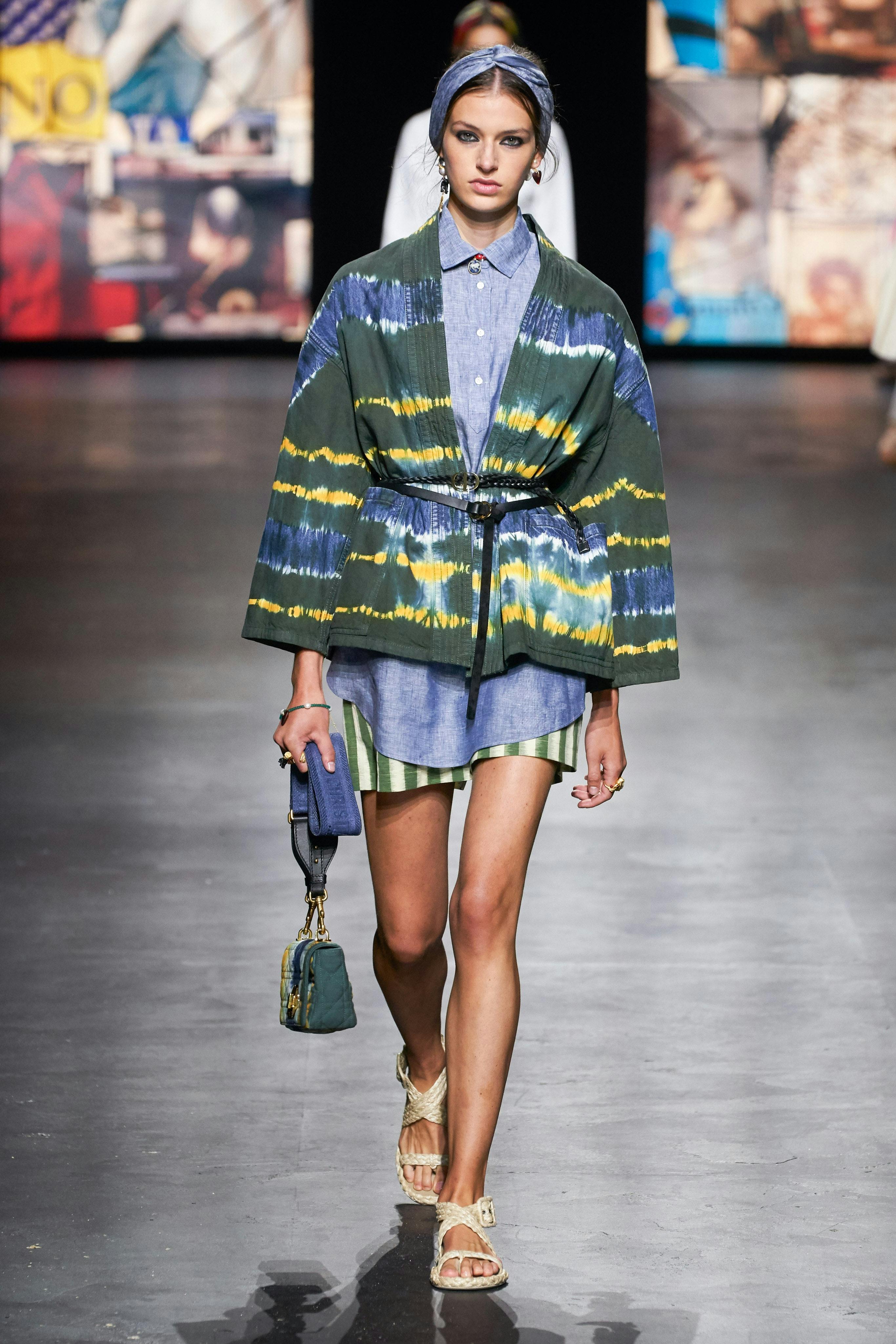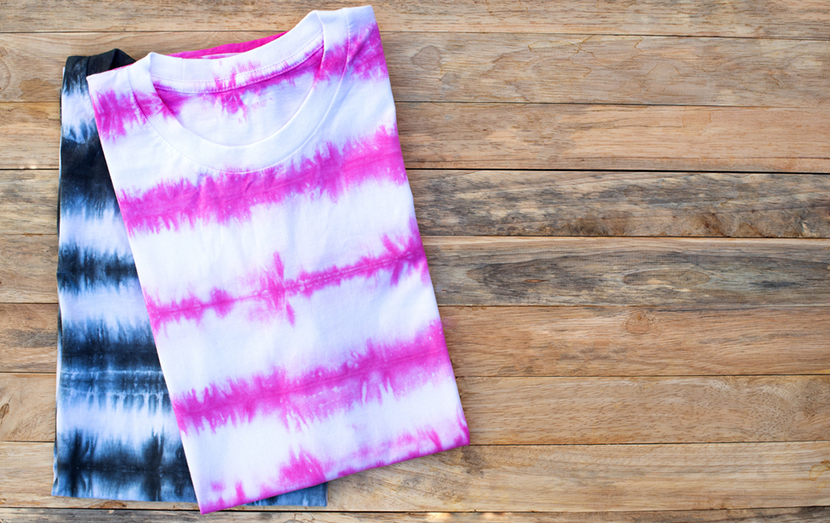tie dye fashion history
Most people associate tie dye with the hippie movement of the 1960s. The history of tie-dyed shirts dates back to ancient China though many people still associate them with Woodstock and the hippie lifestyle from the 1960s.

The Entire History Of The Tie Dye Shirt Updated July 2020 The Adair Group
They fought Germany as teenagers and came back to become fathers.

. In the early 70s tie-dye was widely related to the Hippie movement as its psychedelic form. The simple technique of tying up a piece of cloth before applying dye was enhanced upon by artisans in the 1960s and 1970s and spiral patterns in neon Day Glo colors became the. The anti-war movement at the time created a high demand for colored flashy and extravagant clothing to represent defiance from authority.
Along with love beads sandals and military jackets embellished with peace signs tie-dye is one of the most indelible symbols of 1960s hippie style. Yep weve gone way back in the time machine here. Tie-dye history in this country begins with WWII.
This was the first time tie dye really took off in the United States. Indian cultures practised the technique of. Unlike the tie-dye of the 1960s this modern tie-dye was often mass-produced and sold in retail shops at large malls.
Tie-dye as we know it became popular in the United States in the mid 1950s. The 1950s was a period of strict guidelines. Tie-dyed garments as we know them today took off in the 1960s and have.
Children of strict WWII-age parents started the. The term tie-dye which describes a process of folding twisting or crumpling a textile before tying it with string or rubber bands and then applying dyes entered the. Tie dye was popular in the 1960s as Protest Art then as Pop Fashion in the 70s.
The concept is simple. Tie-dye is a term used to describe a number of resist dyeing techniques and the resulting dyed products of these processes. In earlier centuries the process was not called tie-dye but came to be known as that because of the process of tying off sections of garments with string or rubber bands to.
People used direct dyeing methods with either natural or. Tie-dye was once authentic says Alistair ONeill professor of fashion history and theory at Central Saint Martins. These are the most notable tie dye decades but tie dye is renewed each decade.
We would like to show you a description here but the site wont allow us. According to ONeill various guises of resist-dying where. History Of Tie-Dye Fabric dyeing has been around for hundreds of years but it wasnt until the hippie movement of the 1960s that the term tie-dye became synonymous with the process of.
The History Of Tie Dye November 10 2015. Arts and artisans passed their crafts to their kids and wearers and collectors passed. Tie-Dye Tie-dye is one of the oldest forms of fabric manipulation and design.
He had been studying the different styles and managed to acquire some. Nearly every culture in the world. The process of tie-dye typically consists of folding twisting.
The earliest expressions of Tie Dye The artform of Tie Dye goes back as far as 4000 BCE. The history of tie dye is part of Clothing. Tie-dye quickly became a trend and could be seen on the streets and on television.
For centuries African artists have used the tie-dye technique to produce vivid fabrics for garments and home decor. Beginning with a base fabric intricate patterns are deftly created by winding. Tie and Dye is an invitation from generation to generation to a kaleidoscope of fashion an Indian legacy.
Dye can only penetrate loose fabric and when portions are bound off by string rocks. The late 1960 to early 1970s is when tie-dye was first popularized in the United States. Tie-dye was adopted by an entire generation of rebellious youth making the style a symbolic representation of peace worn by the free-spirited.
Tie Dye In The Western World Tie dye was introduced to the US in 1909 by Professor Charles E Pellew. Unlike many inventions from necessity tie-dye has been a purely cultural invention. Tie-dye became a mainstream fashion starting in the 1990s.
These traditional art forms still exist today. Tie dye history is about Bandhani Shibori and Adire art forms from Indian Japanese and African cultures. It dates back as far as 4000 AD and was practiced by ancient civilizations in India China and Peru.
Those who fought the war had become parents without really knowing how in a lot of cases.
The History Of Tie Dye Hautelist
Tie Dye Is One Of The Biggest Fashion Trends For 2019

How Tie Dye Is Helping Fashion To Beat The Pandemic Blues Wwd

From Hippies To Haute Couture The History Of The Tie Dye Trend Tie Dye Fashion

Tie Dye Is Making A Major Comeback Right Now Here S Why

Grateful Threads Get Ready For Fashion S Tie Dye Revolution Fashion The Guardian

The Entire History Of The Tie Dye Shirt Updated July 2020 The Adair Group

From Hippies To Haute Couture The History Of The Tie Dye Trend

Tie Dye For How To Give Old Clothes A Radical Makeover Video Fashion The Guardian

Post a Comment
Post a Comment